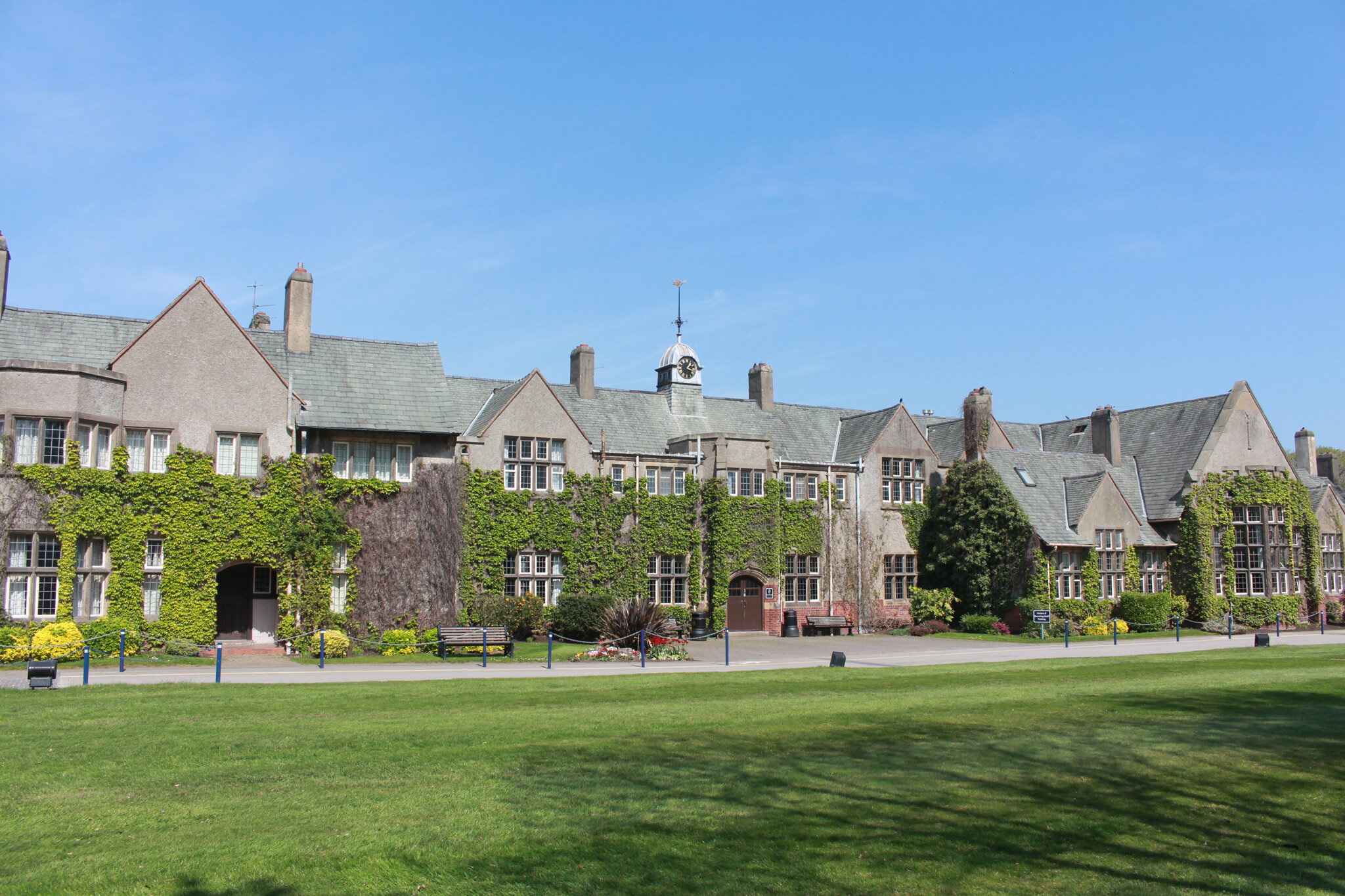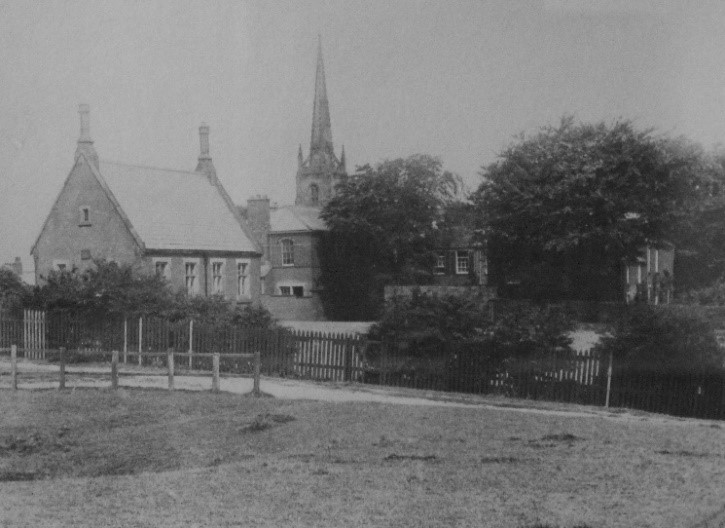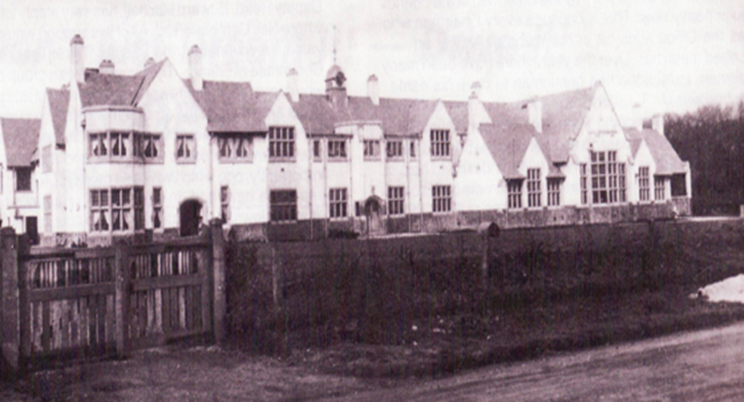Kirkham Grammar School

Evidence of the history of a school is lacking, but all the indications point to the continuation of a Kirkham Chantry School after Henry VIII dissolved the chantries in 1548, and it may well be that the continuation of a school after the dissolution has given rise to the accepted foundation date of Kirkham Grammar School as 1549. It seems that the local gentry valued the School and used it for the education of their own children, alongside those of their tenants.
The earliest recorded mention of the School is in the will of Thomas Clifton of Westby, a wealthy squire who died in 1551 and left a bequest to the School. As time went on, a school house was built on the south side of the churchyard in order to provide better accommodation for a growing number of pupils. Its walls were made of cob and clay, it had a thatched roof and a clay floor, which was replaced by flags in 1635.
Further evidence of the existence of such a school can be found in the records of the Thirty Men of Kirkham. In 1585 they sacked the parish clerk and decreed that his wages be paid to a schoolmaster, one Richard Wilkins, to run the School.
At the same time they took possession of the school house on behalf of the whole parish of Kirkham. The next step was to provide an adequate endowment fund. In 1621 Isabell Birley, an ale-house keeper in Kirkham, attended a meeting of the Thirty Men, with £30 in her apron, which she had collected from local people. Moved by compassion for the poor children she saw in the town, she told the Thirty Men that she had brought the money for “the erection of a free school for poor children to be taught gratis, whose parents were not able to lay out any money for their teaching”. Further gifts were solicited from the principal gentry of the area, notably Sir Cuthbert Clifton and Thomas Westby of Mowbreck. Together with John Parker of Bradkirk, they took over the running of the School, and their names, together with that of Isabell Birley, are commemorated to this day in the list of names read out at the annual Founders’ Day Service, held in St Michael’s Parish Church.
In the seventeenth century, the School came under the influence and later control of one of the City of London’s historic trade guilds, the Worshipful Company of Drapers. Henry Colborn, born in Kirkham, moved to London and made a fortune as a scrivener. He died in 1655 and bequeathed a substantial sum to Kirkham Grammar School, with the funds being administered by the Drapers’ Company.
The Thirty Men of Kirkham resented control of their local School being passed to London, and litigation ensued. After a lengthy court battle, the Worshipful Company of Drapers was given control of Kirkham Grammar School in 1673, and thus began a relationship between the School and the Company, which has lasted to this day.
Recent research suggests that the Drapers’ interest in the School, the Church and the Town was driven by a fear of Lancashire’s strong Roman Catholic community gaining too much influence. Roman Catholicism was regarded in the seventeenth century as a potentially subversive counter-culture, and the strength and persistence of Catholicism in West Lancashire was a source of concern to the London establishment.
The School was, in its early years, at least in theory, open to both boys and girls. In 1670 the Reverend James Barker left money to pay a Master and girls as well as boys were taught in the class taken by the usher, the most junior member of the teaching staff. However, in 1701 the Drapers' Company took a firmer grip on its management and decided that "from henceforth no female sex shall have any conversation or be taught, or partake of any manner of learning whatsoever in the said school, any former custom to the contrary notwithstanding."
This left girls with no school in the town and the situation appears to have remained unchanged until 1760 when the Langton family established a Girls' Charity School on land at the corner of Moor Street and Orders Lane which was to be "for the instruction of poor girls in reading, knitting, sewing and other useful knowledge under the guidance and teaching of a school dame, properly qualified for that office."
Whilst the Grammar School continued to be available to the boys of the town, the Drapers' Company insisted upon the maintenance of a classical curriculum in which Greek and Latin had a major part and this was clearly not suited to the needs of the sons of agricultural labourers, mill workers who formed an increasingly large proportion of an increasingly large population.
By the early 19th century the School was well established, but it remains unclear when the modern name “Kirkham Grammar School” was first used. The 150 year old building was in a poor state of repair, such that in 1806, the Trustees petitioned Christ Church, Oxford, for permission to build a new School on land belonging to Kirkham Parish Church across the lane from the existing school, and a new School was built in 1806/7 at a cost of £1,775. The School had four classrooms and a large detached school hall was later added.

These buildings (pictured to the left) survived until the early 1980s, some having been integrated into St Michael’s Primary School.
By the mid-nineteenth century, the School had been set on a firm footing for the future, ahead of many similar schools in the breadth of its curriculum at a time when many other grammar schools were coming under fire for clinging to the classics in an increasingly industrialised age. A report on the School in 1846 shows that the curriculum for the Upper School had been broadened by the addition of German, Agricultural Chemistry and Geology.
The national re-organisation of secondary education by The Balfour Act of 1902, which brought education under the control of newly-formed Local Education Authorities, proved to be a turning point. These LEAs paid the teachers and provided books and equipment in church schools such as Kirkham, whilst the churches were required to provide and maintain the school buildings. This reform offered Kirkham Grammar School a new lease of life. This posed a huge challenge, but the School Governors moved quickly and by January 1909 the School’s present site on Ribby Road had been identified.
The Governors agreed to level and drain the land and the Drapers’ Company came to their aid with a grant of £3000 towards the building of the new school. Plans were passed by the Governors in July 1909 and the foundation stone was laid on 26th July by Rev. W.J. Mitton, Vicar of Kirkham and Chairman of Governors. The new building was officially opened on September 29th, 1911 by William Benson, Master of the Drapers’ Company, with 65 boys on roll, including seven full boarders and two weekly boarders.
 The new buildings on Ribby Road, pictured to the right in 1911.
The new buildings on Ribby Road, pictured to the right in 1911.
The Headmaster at the time was Reverend Thomas Cambage Walton, who had been appointed in 1905. Having overseen the move to Ribby Road and led the School through the First World War, he died whilst in post on March 8th, 1919 after a short illness.
Rev’d Walton was succeeded on 1st September, 1919, by the Reverend Cresswell-Strange, who went on to lead the School for a remarkable 26 years.
The legacy of Cresswell-Strange, who also served as a Curate of St Michael’s throughout his headship, is in many ways still apparent in the School as it is today. One of his first initiatives was to inaugurate a new House System, with five Houses based on the localities boys were drawn from: Lytham, Blackpool, Kirkham, Fylde, and School House for boarders. He founded the Old Boys’ Association and changed the main winter game from Association to Rugby Football, angered, it is said, by the poor performances of the First Eleven.
During the second half of the twentieth Century, the School’s reputation prospered as a state grammar school, nurturing the careers of national figures such as engineer Professor Eric Laithwaite, sports statistician Tony Lewis and Bishop Ron Brown, a former chorister and Sunday School teacher at St Michael’s.
1979 brought a turning point in the School’s history when it chose to follow a path of independence rather than integrating into the comprehensive system, and at the same time it reverted to co-education, admitting girls for the first time since its earliest years.
a path of independence rather than integrating into the comprehensive system, and at the same time it reverted to co-education, admitting girls for the first time since its earliest years.
Independence proved to be a highly successful gamble, and the School grew and prospered at an unprecedented rate. It enters the sixth century of its existence with approaching 850 pupils on roll and a clear vision of its place in the local, national and international education scene. In recent times former pupils of the Grammar School have achieved prominence in fields as diverse as medicine, engineering, education, professional sport and media.
Much has changed, but the values of the chantry school, established in the early 16th century, remain clearly recognisable at the heart of the life and work of this much-loved school.